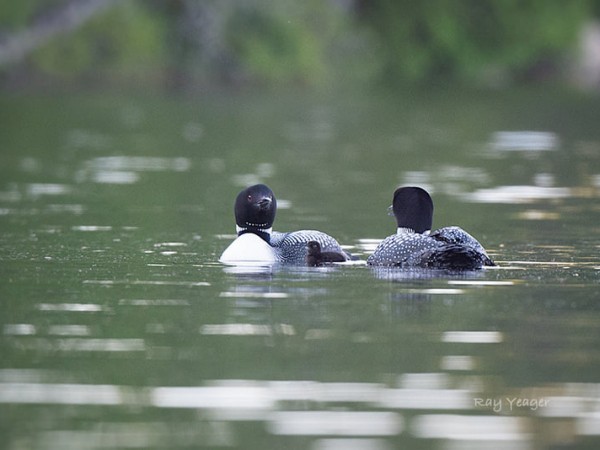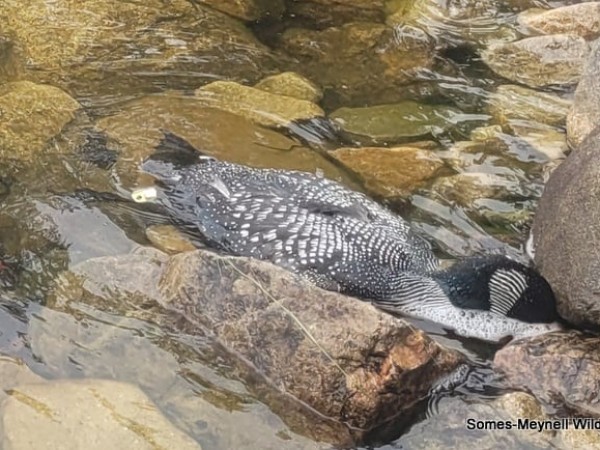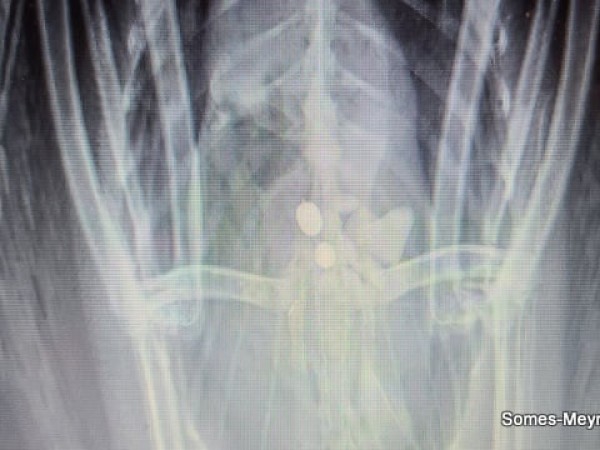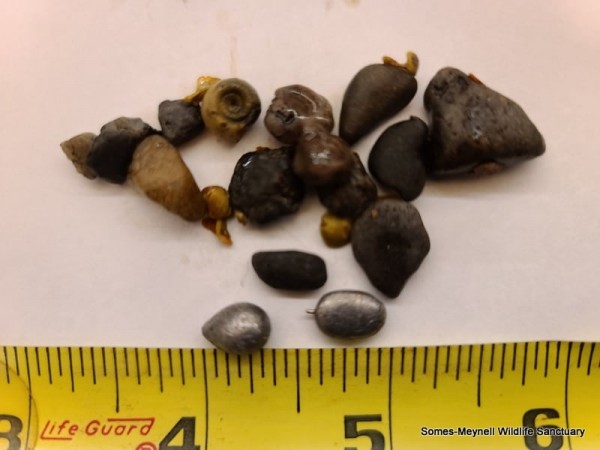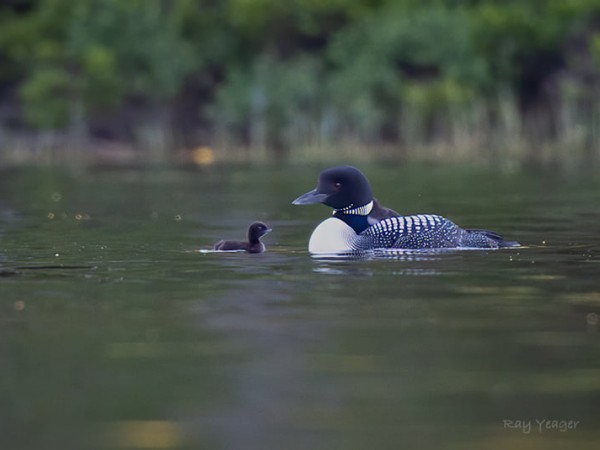Lead Poisoning and the Importance of Fishing Lead Free
The morning of September 25, 2021, I had a call from a resident of the Northern Neck Cove of Long Pond. She had just discovered a loon, motionless, face down in the water along their shorefront. I was not on the island on that day, but a Sanctuary volunteer went over to take a look for me. From photos, it looked like she may have made her last exhalation along the shore with bubbles surrounding her bill (photo attached).
Knowing that this was one of our banded resident loons, all I could say upon that discovery was "Dammit!"
The volunteer collected her, put her in the Sanctuary freezer, and we were able to necropsy her at the College of the Atlantic lab in October, after viewing x-rays/radiographs taken by College of the Atlantic student, Sanctuary Volunteer, and vet assistant Sneha Suresh at Dr. Marc Fine's Acadia Veterinary Hospital. Thanks to both for their help with this and other loon x-rays. The female loon was in overall good condition. There was no evidence of recent or older wounds and no broken or deformed bones. However, she did have 2 round pieces of lead in her gizzard (see x-ray images). On the close-up x-ray and the gizzard content images, you can see the remnant of the hook shaft that had broken off on the larger piece.
The gizzard is the muscular chamber of the stomach that grinds up food items, like fish and crayfish, with the aid of a collection of small stones (sort of like having internal, crushing-type molar teeth). With loons and many other waterbirds there is no picking apart or chewing of their food - it's straight down the hatch whole (with the primary exception of taking off legs of crabs in the ocean and claws of crayfish). Loons pick up stones from lake bottoms, swallow them, and then the rock tumbler gizzard is ready to do its job.
Unfortunately, not all the small, roundish, very dense objects on lake bottoms are stones. Mixed in with the pebbles are lead sinkers and lures that have fallen off or broken off fishing lines over many, many years. Loons don't recognize the difference and ingest them along with similar sized stones (see photos).
As stomach acids and mechanical grinding action get to work on processing food they also start to abrade and chemically process the sinkers or lures, and lead enters the bloodstream. The loon's behavior is altered rapidly for the worse, it becomes lethargic, feeds less and less, and within 2 to 3 weeks it dies of systemic lead poisoning.
This female was originally captured and banded August 1st of 2013 as an adult in the same cove she died in, likely at least in her mid-teens. Since that time, she produced at least 8 eggs that hatched chicks and 5 chicks who fledged. (see photos taken by Ray Yeager) What a pleasure it was to watch the family in the calm cove as they welcomed their new chicks to life outside the shell.
Maine law bans the sale and use of bare (unpainted) lead-headed jigs and sinkers containing any amount of lead that weigh 1 ounce or less and measure 2 1/2 inches long or less, however, the paint covering some lead-headed jigs can easily be removed in the gizzard of a loon where the small stones abrade the paint and expose bare lead. Not a good solution. Lead poisoning from ingestion of lead tackle is the #1 cause of loon deaths in Maine, New Hampshire, and other parts of their range in many or most years.
Other sources of mortality include fishing line entanglement, boat strikes, eagle predation, issues resulting from shoreline development, disease, and injuries. While on the ocean, oil spills are of course a major factor for all birds who get oiled. Loons do not clean up well and do not do well in long-term rehab settings. Switching to non-lead fishing tackle is an easy way to help reduce potential harm and the number of deaths of loons and other animals who suffer from having lead in the food web. It won't remove the reservoir of lead already on the bottom, but it will help keep that risk from growing.
Maine Audubon, the Maine Department of Inland Fisheries and Wildlife, and other partners have a lead tackle buyback program in place in the state. If you like to fish or know others who do, please tell them to check out the fish-lead-free website.
—Billy Helprin, Director of Somes-Meynell Wildlife Sanctuary, Mt. Desert Island, Maine
Facebook: Somes Meynell Wildlife Sanctuary

